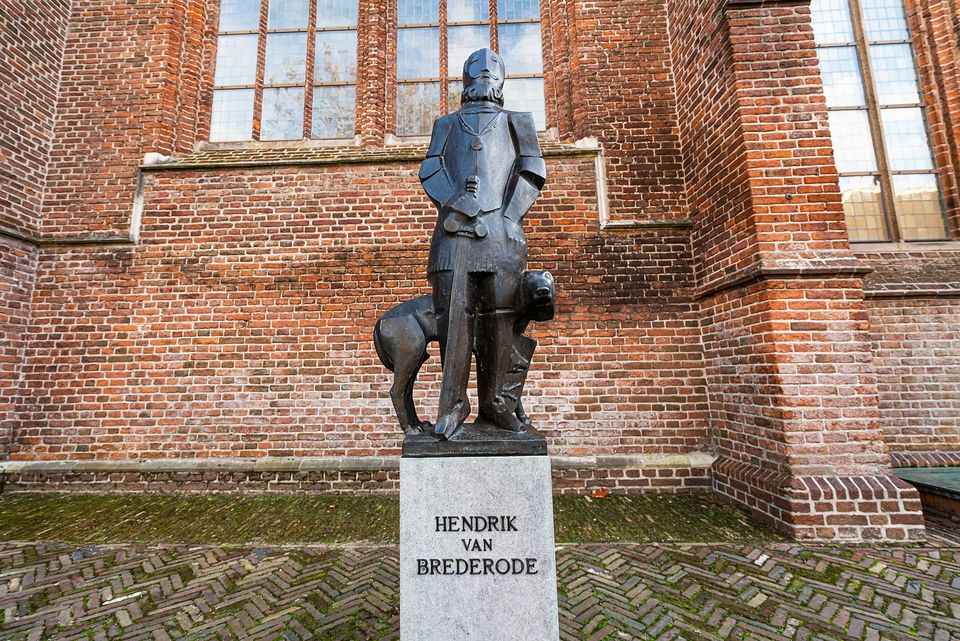
Since 1997, the statue of Hendrik van Brederode has stood on the church square with its back almost against the Grote Kerk. The bronze statue by Utrecht sculptor Paulus Reinhard commemorates the links between the Brederode family and the town of Vianen.
From his marriage to Johanna van Vianen, Walrave I became the first Brederode Lord of Vianen. The family lineage enjoyed a high degree of respect. For example, Reinoud III, great-grandson of Walrave I, is included in the prestigious Order of the Golden Fleece. Ambitious as he was, Reinoud III claimed to be descended from the Counts of Holland and thus the equal of Charles V of Spain. Only after being sentenced to death for committing lèse-majesté did he become loyal and Charles V granted him a pardon.
The son of Re…
Since 1997, the statue of Hendrik van Brederode has stood on the church square with its back almost against the Grote Kerk. The bronze statue by Utrecht sculptor Paulus Reinhard commemorates the links between the Brederode family and the town of Vianen.
From his marriage to Johanna van Vianen, Walrave I became the first Brederode Lord of Vianen. The family lineage enjoyed a high degree of respect. For example, Reinoud III, great-grandson of Walrave I, is included in the prestigious Order of the Golden Fleece. Ambitious as he was, Reinoud III claimed to be descended from the Counts of Holland and thus the equal of Charles V of Spain. Only after being sentenced to death for committing lèse-majesté did he become loyal and Charles V granted him a pardon.
The son of Reinoud III, Hendrik van Brederode, was a good friend of William of Orange and played a pioneering role in the Union of Noblemen. On 5 April 1566, he offered the supplication of the Nobles and became known as the Grote Geus (“Great Beggar”). In the year 1567, Henry was defeated by Spanish forces and fled to Germany. He was so disappointed in William of Orange that he removed him from his will. With the pacification of Ghent in the year 1576, Vianen again fell into the hands of the Brederodes.
In the 17th Century, Johan Wolfert van Brederode was the Field-Marshal of Prince Maurits. In the beautification of Batestein and Amaliastein, Johan Wolfert collaborated with Jacob van Campen, the architect of the Royal Palace of Amsterdam. He constructed the gardens of Batestein as one of the first examples of Dutch Classicist style, later known from Versailles and Het Loo Palace.
Further reading: Batestein Castle, Amaliastein, Mausoleum of Reinoud III van Brederode, Vianen town centre, Grote Kerk Vianen (Great Church).
